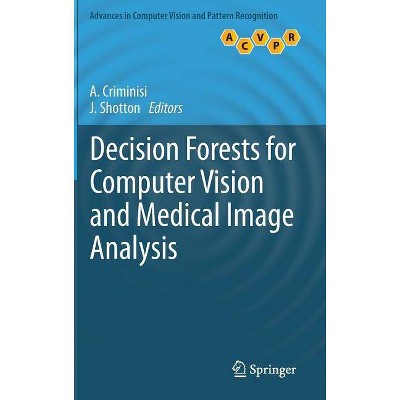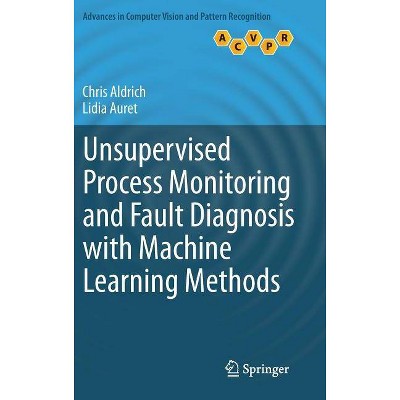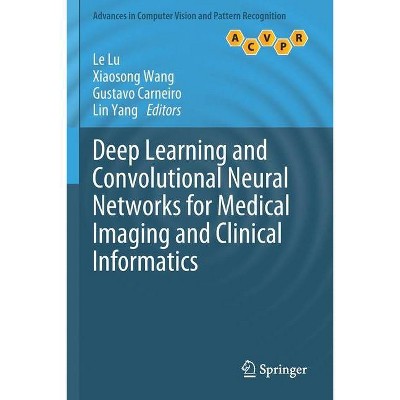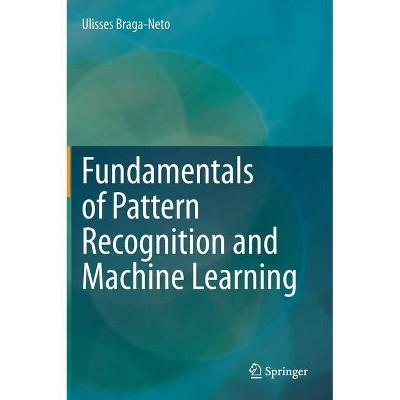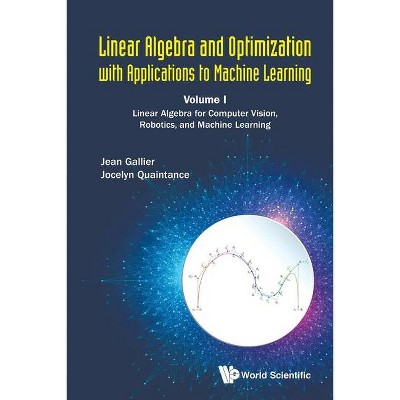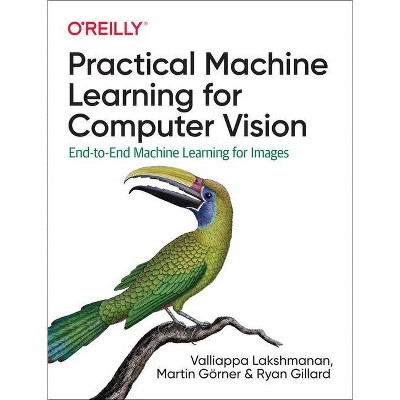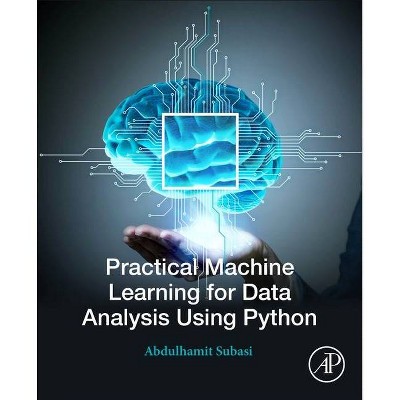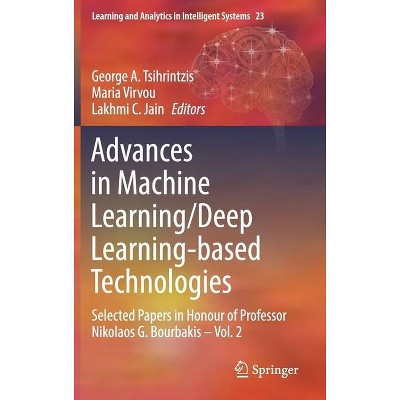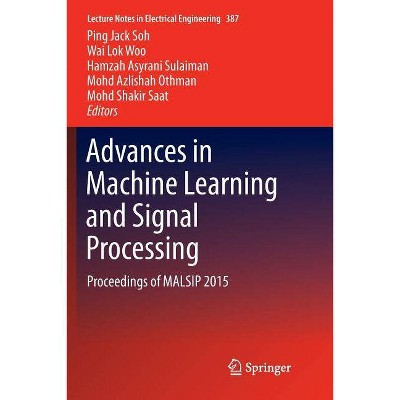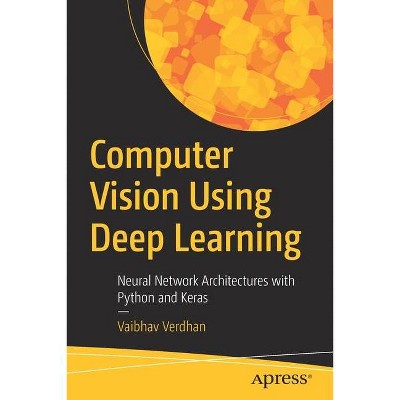Machine Learning for Vision-Based Motion Analysis - (Advances in Computer Vision and Pattern Recognition) (Paperback)
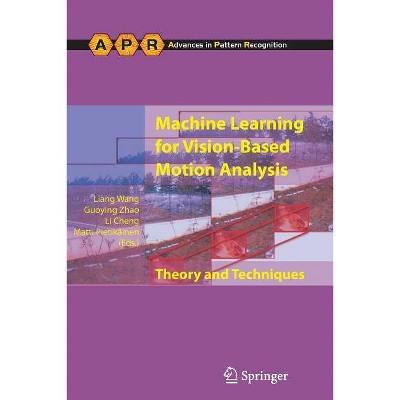
Similar Products
Products of same category from the store
AllProduct info
<p/><br></br><p><b> About the Book </b></p></br></br>Based on contributions to the International Workshop on Machine Learning for Vision-Based Motion Analysis, this volume highlights the latest algorithms and systems for robust and effective vision-based motion understanding.<p/><br></br><p><b> Book Synopsis </b></p></br></br><p><b>Part I: Manifold Learning and Clustering/Segmentation</b></p><p>Practical Algorithms of Spectral Clustering: Toward Large-Scale Vision-Based Motion Analysis<br><i>Tomoya Sakai, and Atsushi Imiya</i></p><p>Riemannian Manifold Clustering and Dimensionality Reduction for Vision-based Analysis<br><i>Alvina Goh</i></p><p>Manifold Learning for Multi-dimensional Auto-regressive Dynamical Models<br><i>Fabio Cuzzolin</i></p><p><b>Part II: Tracking</b></p><p>Mixed-state Markov Models in Image Motion Analysis<br><i>Tomás Crivelli, Patrick Bouthemy, Bruno Cernuschi Frías, and Jian-feng Yao</i></p><p>Learning to Detect Event Sequences in Surveillance Streams at Very Low Frame Rate<br><i>Paolo Lombardi, and Cristina Versino</i></p><p>Discriminative Multiple Target Tracking<br><i>Xiaoyu Wang, Gang Hua, and Tony X. Han</i></p><p>A Framework of Wire Tracking in Image Guided Interventions<br><i>Peng Wang, Andreas Meyer, Terrence Chen, Shaohua K. Zhou, and Dorin Comaniciu</i></p><p><b>Part III: Motion Analysis and Behavior Modeling</b></p><p>An Integrated Approach to Visual Attention Modeling for Saliency Detection in Videos<br><i>Sunaad Nataraju, Vineeth Balasubramanian, and Sethuraman Panchanathan</i></p><p>Video-based Human Motion Estimation by Part-whole Gait Manifold Learning<br><i>Guoliang Fan, and Xin Zhang</i></p><p>Spatio-temporal Motion Pattern Models of Extremely Crowded Scenes<br><i>Louis Kratz and Ko Nishino</i></p><p>Learning Behavioral Patterns of Time Series for Video-surveillance<br><i>Nicoletta Noceti, Matteo Santoro, and Francesca Odone</i></p><p><b>Part IV: Gesture and Action Recognition</b></p><p>Recognition of Spatiotemporal Gestures in Sign Language using Gesture Threshold HMMs<br><i>Daniel Kelly, John Mc Donald and Charles Markham</i></p><p>Learning Transferable Distance Functions for Human Action Recognition<br><i>Weilong Yang, YangWang, and Greg Mori </i></p><p/><br></br><p><b> From the Back Cover </b></p></br></br><p>Techniques of vision-based motion analysis aim to detect, track, identify, and generally understand the behavior of objects in image sequences. With the growth of video data in a wide range of applications from visual surveillance to human-machine interfaces, the ability to automatically analyze and understand object motions from video footage is of increasing importance. Among the latest developments in this field is the application of statistical machine learning algorithms for object tracking, activity modeling, and recognition.</p><p>Developed from expert contributions to the first and second International Workshop on Machine Learning for Vision-Based Motion Analysis, this important text/reference highlights the latest algorithms and systems for robust and effective vision-based motion understanding from a machine learning perspective. Highlighting the benefits of collaboration between the communities of object motion understanding and machine learning, the book discusses the most active forefronts of research, including current challenges and potential future directions.</p><p><b>Topics and features: </b></p><ul><li>Provides a comprehensive review of the latest developments in vision-based motion analysis, presenting numerous case studies on state-of-the-art learning algorithms</li><li>Examines algorithms for clustering and segmentation, and manifold learning for dynamical models</li><li>Describes the theory behind mixed-state statistical models, with a focus on mixed-state Markov models that take into account spatial and temporal interaction</li><li>Discusses object tracking in surveillance image streams, discriminative multiple target tracking, and guidewire tracking in fluoroscopy</li><li>Explores issues of modeling for saliency detection, human gait modeling, modeling of extremely crowded scenes, and behavior modeling from video surveillance data</li><li>Investigates methods for automatic recognition of gestures in Sign Language, and human action recognition from small training sets</li></ul><p>Researchers, professional engineers, and graduate students in computer vision, pattern recognition and machine learning, will all find this text an accessible survey of machine learning techniques for vision-based motion analysis. The book will also be of interest to all who work with specific vision applications, such as surveillance, sport event analysis, healthcare, video conferencing, and motion video indexing and retrieval.</p><p><b>Dr. Liang Wang</b> is a lecturer at the Department of Computer Science at the University of Bath, UK, and is also affiliated to the National Laboratory of Pattern Recognition in Beijing, China. <b>Dr. Guoying Zhao</b> is an adjunct professor at the Department of Electrical and Information Engineering at the University of Oulu, Finland. <b>Dr. Li Cheng</b> is a research scientist at the Agency for Science, Technology and Research (A*STAR), Singapore. <b>Dr. Matti Pietikäinen</b> is Professor of Information Technology at the Department of Electrical and Information Engineering at the University of Oulu, Finland.</p><p/><br></br><p><b> Review Quotes </b></p></br></br><br><p>From the reviews: </p><p>"The successes of the First and Second International Workshops on Machine Learning for Vision-Based Motion Analysis, which were held in 2008 and 2009, prompted this book. The book consists of four parts, and each part includes a number of freestanding chapters. ... This book provides a comprehensive introduction to machine learning for vision-based motion analysis. I would recommend it to students and researchers who are interested in learning about the topic." (J. P. E. Hodgson, ACM Computing Reviews, June, 2011)</p><br>
Price History
Cheapest price in the interval: 199 on November 8, 2021
Most expensive price in the interval: 199 on December 20, 2021
Price Archive shows prices from various stores, lets you see history and find the cheapest. There is no actual sale on the website. For all support, inquiry and suggestion messagescommunication@pricearchive.us
